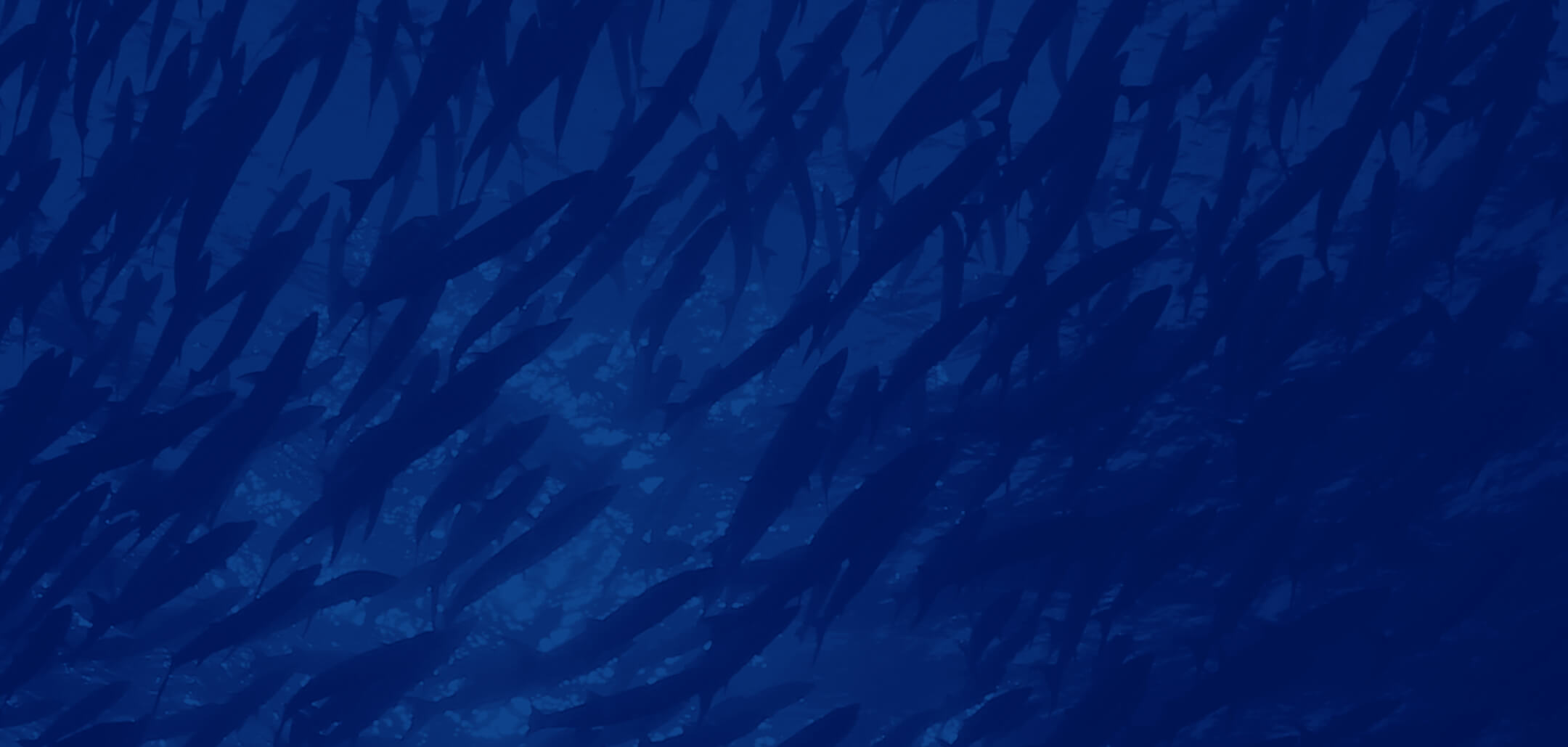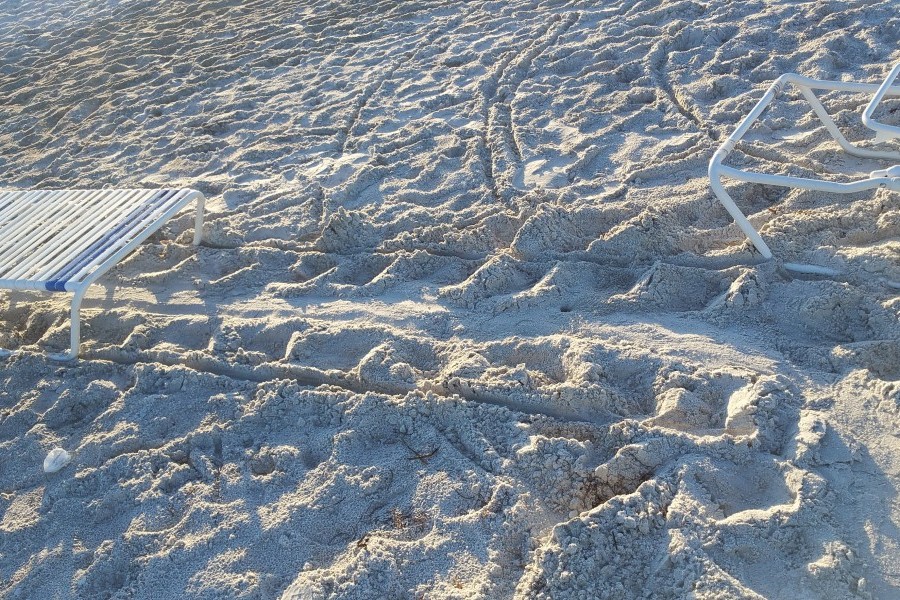Mote Marine Laboratory found evidence that two nesting sea turtles dragged beach furniture caught on their upper shells during the past week on Longboat Key — a reminder that southwest Floridians should remove beach furniture at night to protect these threatened and endangered reptiles.
Loggerhead sea turtle tracks leading beneath a beach chair, with lines showing the chair had been dragged several feet, were reported July 9 by Mote scientists and volunteers from the Longboat Key Turtle Watch, which monitors the Manatee County portion of Longboat Key under Mote’s state permit. Fortunately, the turtle left the chair behind.
In a less lucky case discovered July 6 on Longboat Key, Mote’s Sea Turtle Patrol found loggerhead tracks bordered by drag lines consistent with a beach chair entanglement, leading into the ocean. Mote scientists don’t know what happened to that turtle.
“We are quite concerned because we don’t know if that turtle was able to free itself; anything that impedes a turtle’s ability to swim and surface to breathe could be a serious problem,” said Kristen Mazzarella, senior biologist with Mote’s Sea Turtle Conservation & Research Program.
- If you spot an entangled sea turtle, or any stranded, distressed or deceased sea turtle or marine mammal in Sarasota or Manatee counties, call Mote’s Stranding Investigations Program — a 24-hour response service — at 888-345-2335. Elsewhere in Florida, please call the FWC Wildlife Alert hotline at 1 (888) 404-FWCC (3922).
Southwest Florida’s most common sea turtle species nest at night. Furniture left on the beach at night presents an obstacle to nesting turtles and their babies, called hatchlings. Mote’s Sea Turtle Conservation & Research Program monitors 35 miles of beaches from Longboat Key through Venice each day of nesting season, May 1-Oct. 31. Prior to the past week, Mote has reported a couple of cases where turtles dragged beach furniture in the past few years, along with numerous other interactions, such as turtles hitting or becoming stuck underneath beach furniture.
Local ordinances require that temporary structures (including beach furniture) be removed from the beach or stored as close to the dune line as possible without impacting the dune or native vegetation from 11 p.m.-5 a.m. during nesting season on Longboat Key, and removed or stored in county-designated areas from sunset to sunrise on other local beaches covered by Sarasota County’s Marine Turtle Protection Code. This is critically important, given the increased numbers of nesting turtles visiting our beaches in recent years.
Turtle-friendly tips:
Beach furniture, trash and other obstacles can impede sea turtles and their young. Also, light from waterfront properties can disorient sea turtles, which emerge at night and use dim natural light to find the sea.
Here are some “do and don’t” tips to keep our beaches turtle-friendly:
Do:
- Stay away from sea turtle nests marked with yellow stakes and tape, and seabird nesting zones that are bounded by ropes.
- Remain quiet and observe from a distance if you encounter a nesting sea turtle or hatchlings.
- Shield or turn off outdoor lights that are visible on the beach from May through October.
- Close drapes after dark and stack beach furniture at the dune line or, ideally, remove it from the beach.
- Fill in holes that may entrap hatchlings on their way to the water.
Don’t:
- Approach nesting turtles or hatchlings, make noise, or shine lights at turtles.
- Use flashlights, head lamps or fishing lamps on the beach.
- Encourage a turtle to move while nesting or pick up hatchlings that have emerged and are heading for the water.
- Use fireworks on the beach.
- Walk dogs on any Sarasota County beach other than Brohard Paw Park in Venice. There, dogs must be leashed or under voice control, according to county ordinances.


